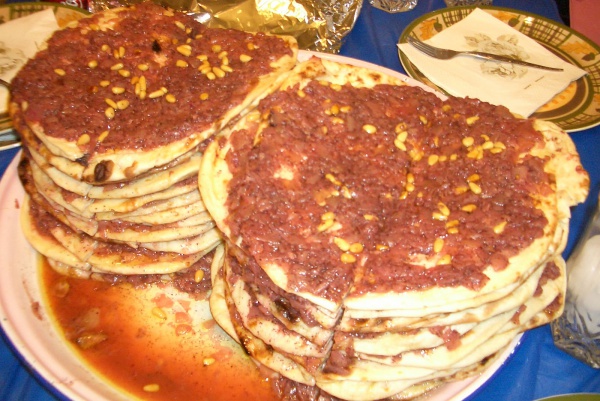Facts About Taboon bread
Taboon bread, also known as laffa, is a cherished Levantine flatbread traditionally baked in a taboon or tannur oven. It bears a close resemblance to the tandoor breads found in Asia. This versatile flatbread is often used as a base or wrap for a variety of fillings, making it a staple in many meals. It boasts a medium thickness, a slight chewiness, and remarkable durability.
In Palestinian cuisine, taboon bread holds a particularly special place. It is frequently baked on small hot stones inside a taboon oven and serves as a key component of musakhan, a dish many regard as a national treasure. In the early 20th century, German orientalist Gustaf Dalman documented the traditional methods of making taboon bread in Palestine. Historically, Palestinian village women would gather around communal taboons to bake their bread, transforming the activity into a significant social event. Several mouth-watering variations of taboon bread are found in Palestine, including versions filled with spinach and onion, cheese curds and onion, or raisins and pine nuts.
In Israel, taboon bread is equally popular and is also known as laffa, or sometimes "Iraqi pita." It is commonly available in bakeries and food stands, where it is often used to wrap shawarma, falafel, or hummus. In Jerusalem, this flatbread is referred to as eshtanour. Additionally, the thin saj flatbread is occasionally referred to as laffa in Israel.

 Israel
Israel